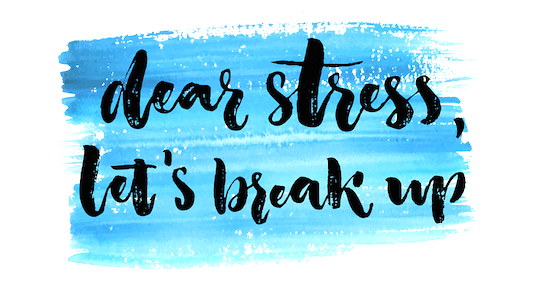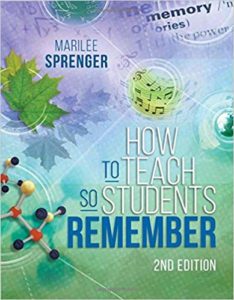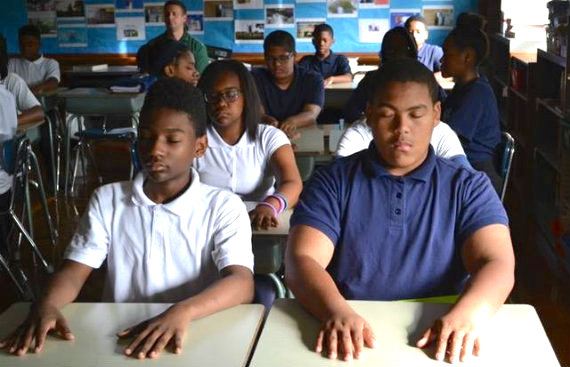The Break-Up Letter: Bring SEL Alive in Class
 By Marilee Sprenger
By Marilee Sprenger
I am standing at the door, greeting my students. The seventh graders walk into my room. I am waving a sheet of notebook paper in my hand.
“What’s that, Mrs. S?” asks Angelo.
“Uh-oh, is that my paper? Did I set up my outline wrong?” Jaclyn inquires.
I walk over and turn off the morning music and return to the front of the room.
“I found this letter,” I announce. “It’s a break-up letter. I think someone dropped it.”
“You have to read it!” comes the chorus.
“Of course, I do!”
Dear S.L.,
This is one of the hardest letters I’ve ever had to write. I just can’t take it anymore. I have to break up with you. I have lost more sleep over you and have shed more tears because of you than anything else in my life.
It is your fault that I have missed out on so many things. It was because of you that I didn’t go to the party at Susie’s on Saturday night. You kept me from going on the class trip, too.

How could I have let you ruin my life? You ran my life and then you ruined my life! But tomorrow is a new day. I am letting you know now that my life is going to change. I will not let you continue to dictate what I do or who I see. I am taking back control. I am moving forward.
Oh, I know you’ll still be somewhere in my life. I know that I won’t be able to erase you completely. But I will only deal with you when I have to. And I will not be the pushover that I have been. I will no longer be putty in your hands.
I am crying now as I write this. You have been a huge part of my life. You were there when I climbed the tree that we weren’t supposed to climb at the park. You were there when I got my first date. When I visited my grandfather in the hospital, you were there.
It was good to have you with me when I was going on that interview for social studies class. And the time I asked Mrs. Kyle if I could have extra time on my research paper. Those were good times. You were there when I was grounded and I snuck out of the house to watch the fireworks on the 4th of July. I’m really glad I hitched a ride to the movie theater that day I was late meeting the whole class, even though my parents would have killed me if I’d gotten caught. Yep. You were there for that, too. How can you be so good for me and bad for me?
It’s hard for me to think about my future without you. What will become of me? As unsure as that all is, I am certain that I need to make this break from you. I just can’t go on the way things have been. I won’t ask for your forgiveness, but please, let me live my life without you controlling everything. I don’t hate you, but I have to keep you from ruining my plans. Please, let me be free!
Me
At first my students were quiet. Then the whispers began. “Who is S.L.?” “Do you think it’s Steve Lingenberg?” “I think a girl wrote that. Who was late when we went to the movie?”
“Let me see the handwriting, I bet I can recognize it!” “Wait, what? Where’s Rahul?” “Who’s Rahul?”
“Who do you think it is, Mrs. Sprenger?”
The Reveal
At that point, everyone looked up at me. “I think it could have been written by any one of us,” I began. “You see, the S. and L. stand for Stress Level. This person is trying to get rid of stress.” There are a few moans, and then I reread the letter that now has a context. I could see the “Aha” moments on many of their faces as they made personal connections. And then some comments.

“Stress keeps me from calling friends. I’m always worried I’m not good enough.”
“My parents stress me out. They never let me do anything!”
There were also questions like “Why did stress keep her from going to the party?” “Why was it good that stress was with her when she spoke to Mrs. Kyle?” These were great questions that lead us into discussing good stress and bad stress.
We then discussed what stress does to the body and the brain. The fight, flight, and freeze response was connected to stress.
My next step in this social emotional learning lesson on stress was to ask my students to write a break-up letter to whatever it was that they needed to extricate themselves from. Some wrote to Stress, some to Anger, some to Parents, and various other audiences. The students were asked not to share their letters with anyone until they had finished them on their own. I provided class time because many would not feel comfortable writing at home.
This was an eye-opening experience for many of my students. They examined their stressors, faced some of their worst fears and did a lot of feeling. They became more self-aware.
More Follow-up Activities
To piggy-back off this lesson we did some of the following activities:
1. We discussed how to calm our stress. For immediate stress relief the students learned 4 square breathing (inhaling up to the count of 4, holding the breath in for a count of 4, exhaling to the count of 4, and relaxing to the count of 4; then repeat until breathing is slow and deliberate.)
2. We added counting as a way to calm ourselves. Students thought a count of 20 might be necessary for their age.
3. I offered them stress balls and beanie babies to squeeze in order to lower stress. Students reported on the helpfulness of this and similar strategies.
4. 90 seconds of CBS. Eventually, we switched these around to counting, breathing, and squeezing; we called it the CBS treatment. It has been suggested that the body can rid itself of stress in 90 seconds. So, the 90 second rule was our guide to the length of time with any immediate stress reliever.
5. Brain chill. Another session included students helping me set up a “safe space” for them to use if they really needed to “cool off.” In brain terms, they needed their limbic brain (the emotional brain) to calm down.
6. Fight, flee or freeze. To help facilitate this idea, we discussed the difference between the fight or flight response in which you are trying to defend or save yourself, and the freeze response which can be a total shutdown.
7. The students decided we needed a quiet spot. There was a small “reading room,” which had been a closet, that we used as the safe, calm space. Someone brought in a bean bag chair and others brought pillows.
8. We became more active. We also designated an area at the back of the room where students could do some physical activity to help them destress. This included an exercise mat, jump rope, and even some Legos for small muscle movement. There was also a high stool for students to sit on and swing their legs.
9. We added yoga. One of our faculty members who teaches yoga came in and worked with each class teaching them easy, relaxing stretches. We also found some short videos on the Internet to help with this practice.
10. Stick and Slap! Middle schoolers love to use sticky notes. To handle some stressors, I ask them to write as much as they can on one sticky note explaining their distress. Then they can slap it on their desk or notebook to keep it private, or they can stick it on the bulletin board where others can see it. The act of writing the stressor down seemed to help separate them from the situation, so they could look at it calmly.
We all find that after a little while when we reread our own note, the issue doesn’t seem to be as stressful. If it is, students are encouraged to speak to a fellow student, to me, or to another adult in the building.
The break-up letter is an idea worth considering
I am writing a book on Social Emotional Learning and the Brain in which I will include letters written by students. The letters help them become aware of their emotions and find strategies that will work for them and their individual experiences. I learned a great deal about my students through those letters.
Let’s SEL-ebrate our students. Social Emotional Learning Elicits Brain Responses Appropriate to Experiences. By reducing stress and teaching students how to manage their emotions, we can expect a lot of Celebration!
____________________________________

Sprenger is the author of twelve books on the brain and learning. Her most recent books are How to Teach So Students Remember, 2nd Edition (ASCD, 2018) and 101 Strategies to Make Academic Vocabulary Stick (ASCD, 2016). She has written numerous articles and contributed chapters to several publications. See her other MiddleWeb articles here, including her Top 10 post “The 10-Minute Vocabulary Lesson.” You can reach Marilee at (309) 264-5820, her website marileesprenger.com, email brainlady@gmail.com, or on Twitter @MarileeSprenger.




































Marilee, I love what you are doing with your students!
Marilee,
Thank you for this post! It not only serves as a reminder for teachers but principals as well.